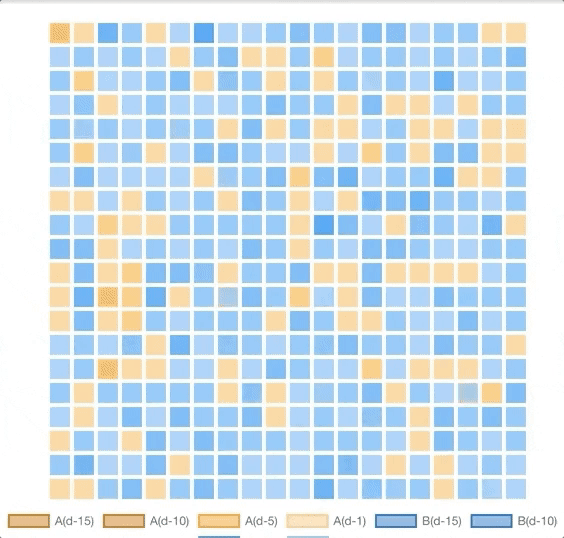Avalanche: The World-Scale Smart Contracts Platform That Is Soon To Have Free Transactions

Avalanche (AVAX) is a cryptocurrency capable of over 4500 tps on a network of hundreds to thousands of low-end-hardware nodes, with support for the easy creation of subnetworks with custom virtual machines, smart contracts based on the Ethereum Virtual Machine, and tokens. And this robust next-generation platforms-of-platforms is soon to have completely free transactions.
First, let’s back up. How did we get here, and where are we now?
Avalanche is a new family of consensus protocols combining the best qualities of both Classical consensus protocols and Nakamoto consensus protocols, designed by the anonymous group known as Team Rocket, in their 2018 paper known as “From Snowflake to Avalanche.” In a very low-level way, this is a protocol that excels at utilizing random sampling of peers and subjective node state changes in multiple rounds of network polling. Here is a visualization of how nodes on this network come to consensus:

Avalanche consensus allows blockchains to scale about two orders of magnitude higher than their Nakamoto consensus peers, with all the same safety and decentralization guarantees. In terms of scaling the validator set, it allows us to pile as many validators as we want on the system with little to no consequences on the efficiency of the network. Avalanche supports validator sets anywhere from thousands to millions of validators.
The Purpose of Avalanche, and What It Brings To The Table For Cryptocurrency
In a universe of thousands of cryptocurrency startups with negligible improvements on the things they set out to achieve, the bar for the things you need to accomplish to become a relevant project is being raised higher and higher. Frankly, people are tired of hearing the same project being launched over and over again with a different name and brand.
Avalanche on the other hand is offering new things, and this is the fastest transactions any cryptocurrency has any seen (with finality being between subsecond and three seconds), the most scalable cryptocurrency (without sharding or validator restrictions) ever created, and the most decentralized cryptocurrency ever created. These are the ingredients for a cryptocurrency technically capable of being a platform of platforms and offering new scaling for cryptocurrency in general.
In fact, this can be said to be the purpose of Avalanche, to help scale the cryptocurrency ecosystem. Whether you interpret this to be eating market share from the likes of Ethereum, or being a mutually beneficial companion with the likes of Ethereum in their efforts to scale, is up to you. But either way, Avalanche offers an innovation in robustness and scaling that simply cannot be ignored.
Where We Are Now
Currently, the anti-spam mechanism for transactions is a modest fee burn, which promotes radical deflation of the monetary supply. Hundreds of AVAX and hundreds of dollars have been burned to date, and the Avalanche mainnet has only been live for a month.
Avalanche is a radically deflationary cryptocurrency containing both a fee-burning mechanism, staking incentivized by validating subnets, and a hardcoded maximum supply cap (like in Bitcoin). The creation of tokens, blockchains, and subnetworks also all have a small fee attached to them, these higher than the fee for a normal transaction.
In the near future, variable fees will be implemented on Avalanche to lower them further and make them far more efficient.
The Model For Free Transactions
In addition to the fee burning mechanism, there will also be a method to optionally send transactions for free, using precomputed Proof of Work, and even without any fee or POW at all up to a certain number of times per address for a given amount of time. This is similar to the spam-resistance model in the cryptocurrency known as Nano, where there is precomputed POW in the form of hashpuzzles that each wallet must compute to be able to send transactions.
An explanation of the implementation of this dual spam-resistance model can be read here:
Transaction Tiers: Unlike in a model such as Ethereum’s, where every transaction invocation must pay some gas, Avalanche adopts a different model that incorporates two types of transaction processing mechanisms. All keys with positive account balances will be able to immediately interact with the platform, where the fees will be based on an allotment mechanism, functionally similar to a tiered payments model adopted in cloud computing platforms. Every transaction will name a sender address (i.e. the invoker), which will be checked for current invocation allotment. If the address still has free invocations left, the transaction does not have to carry any fees attached by the sender. Past a certain amount of calls, the sender will need to attach some fees based on the resources used to compute the transaction. Additionally, users may opt instead pay for their transactions using computation. To that end, future releases will support free frequency-limited transactions, which do not require fees in coins but require some pre-computation. Whenever a new transaction is generated, the user will compute and attach a valid PoW on the transaction, which can be checked by all other parties.
Spam Management: Although simple payments do carry fees, the value will be virtually zero. This, however, can lead to spam in the network. In future releases, to prevent congestion, each transaction carries with it a local PoW. The PoW is initially of low difficulty and therefore a transaction can be immediately issued with very little overhead. However, if a specific key generates a 150 large amount of transactions in a short amount of time, each subsequent transaction will carry a larger amount of difficulty in its PoW puzzle. This mechanism works in conjunction with the fee burning.
In summary, an address will be able to send entirely free transactions up to a certain number of times, and past that is permitted to continue sending free transactions if they precompute some POW as spam resistance. The ability to send transactions by burning a fee also remains as an option, and the precomputed POW can be used in conjunction with the fees to lower fees if necessary.
The Synergy Between Free Transactions and Fee Burning
At first it may seem like the free transactions could altogether replace transactions with a fee burn, which could negate the deflationary aspect, but this is not necessarily the case. There will remain a couple of use cases for fee burns above precomputed POW that I can think of.
Firstly precomputed POW takes more time, and if you have an app or service that relies first and foremost on immediate responsiveness and speed, than computing POW as you go might just become a time-waster, or worse yet, it might hurt your usecase. Secondly, having the option to send transactions by burning fees is a great policy if there is ever an attacker that wants to attack the POW layer with specially designed Asics, so that the network can keep operating as normal. Thirdly, if you are a business doing a high volume of transactions, you might not have the computational resources to do POW, and doing so would just cost money all the same.
Regardless, even if the fee-burn layer was completely negated by POW-Based free transactions (which it is not), the deflationary aspects of Avalanche wouldn’t cease to exist. Avalanche has another mechanism that incentivizes deflation in the long run, and that mechanism is staking incentivized by subnets. After the validator rewards dry up, validation will be incentivized by validators trying to earn rewards on various subnets (which require validating mainnet). Validators will be looking to earn both token rewards and redistributed fees. Additionally those that create subnets have to validate mainnet to validate their subnet.
The synergy between free transactions and fee burning is that it creates an environment that is deflationary, but also high-utility, leveraging the best aspects of both.
The Utility of Free Transactions
Without deeper analysis one might assume that free transactions are a pointless and vain luxury. However, there are a few use cases that are massively powered by the advent of free transactions which simply should not be ignored.
The first major use case powered by free transactions are frictionless token transfers. Not having to carry AVAX to spend a token is a huge boost in utility to various crypto businesses using tokens. This is hugely beneficial to people because it means they don’t have to buy AVAX to buy their token, which creates greater simplicity and a better user experience.
The second major use case offered by free transactions is solidifying the “Unit of Account” aspect of AVAX. Traditionally, cryptocurrencies have struggled to be good Units of Account, and this was partially because they have such as aesthetically unpleasing appearance to them. For example if you send 1 AVAX using fee burn, and you have 10 AVAX, you will lose 0.01 AVAX, making your remaining balance 8.99 AVAX. If you use a free transaction however, that ugly 8.99 AVAX would have been a 9 AVAX, which is obviously better from a UX point of view.
The third major use case of free transactions is creating free-to-use decentralized social media and messaging services. People have created these decentralized concepts before, but because you had to buy cryptocurrency to use them, the learning curb was too steep for most new people. With free transactions, you could have decentralized social media and messaging services without this steep learning curb, offering all the benefits of the decentralization and none of the costs to the UX.
Conclusion
Free transactions are not here yet for the decentralized and deflationary cryptocurrency known as Avalanche (AVAX) but they are planned for integration. Free transactions will bolster the use cases of Avalanche by providing frictionless token transfer, better Unit of Account, and less friction in other decentralized applications. Additionally, different free-transactions concepts can be experimented with on Avalanche subnets, with their own unique, customizable virtual machines.
Avalanche is a breakthrough in distributed consensus technology that allows for radical scaling of both transactions and the validator set, and it seeks to help scale the cryptocurrency ecosystem and position itself as a relevant platform to perform blockchain operations. There are hundreds going on thousands of validators, and if you would like to participate in the validation process, you can currently earn up to 11% APY for doing so.
![]()
Avalanche: The World-Scale Smart Contracts Platform That Is Soon To Have Free Transactions was originally published in Avalanche Hub on Medium, where people are continuing the conversation by highlighting and responding to this story.

